Pioneering techniques eliminate pain, restore mobility
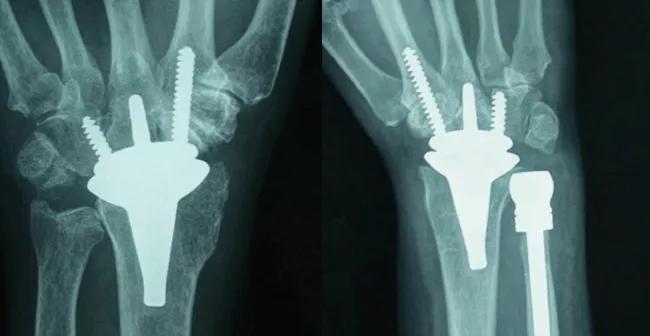
By David Shapiro, MD; Steven Maschke, MD; Peter Evans, MD, PhD; and William H. Seitz Jr., MD
Cleveland Clinic is a non-profit academic medical center. Advertising on our site helps support our mission. We do not endorse non-Cleveland Clinic products or services. Policy
Surgeons in the Hand and Upper Extremity Center at the Cleveland Clinic Department of Orthopaedic Surgery have championed and pioneered some of the newest innovative techniques to treat areas of arthritis and eliminate pain while still maintaining some degree of functional mobility.
Most people think of the wrist as a relatively simple hinged joint. It is, however, quite the contrary. The wrist is a complex set of articulations made up of eight carpal bones that articulate with the five fingers of the hand at the far end, amongst each other centrally and with the radius and ulna of the forearm proximally to provide complex mobility, including flexion, extension, radial deviation, ulnar deviation, pronation and supination, and the more complex but functionally important circumduction maneuvers.
Arthritis is the deterioration of the normal smooth cartilaginous joint surfaces that when healthy glide across each other in these multiple complex articulations. Arthritis may be the result of “wear and tear” (advanced age and repetitive activities), trauma (fractures, dislocations and ligamentous injuries resulting in malalignment) or inflammatory diseases, such as rheumatoid arthritis, gout or even infection.
The results of arthritis in and around the multiple wrist articulations leads to a combination of stiffness with loss of normal mobility, pain and swelling resulting in loss of functional mobility, dexterity and strength. This can be quite disabling.
At times, some of the articulations within the wrist are spared the degenerative process of arthritis, but the area of pathologic degeneration overwhelms an individual’s ability to utilize the non-diseased portion of the wrist. At other times, all the articulations are diseased, in which case management has historically included total wrist arthrodesis (fusion of all the bones to create a solid mass). This reduces pain but eliminates mobility.
Whenever possible, preservation of an individual’s own articular surfaces remains the primary goal in management at the Hand and Upper Extremity Center. Careful assessment of which articular surfaces remain viable allows surgeons to plan and execute surgical procedures designed to eliminate pain while preserving functional motion. Several of these procedures are described below:
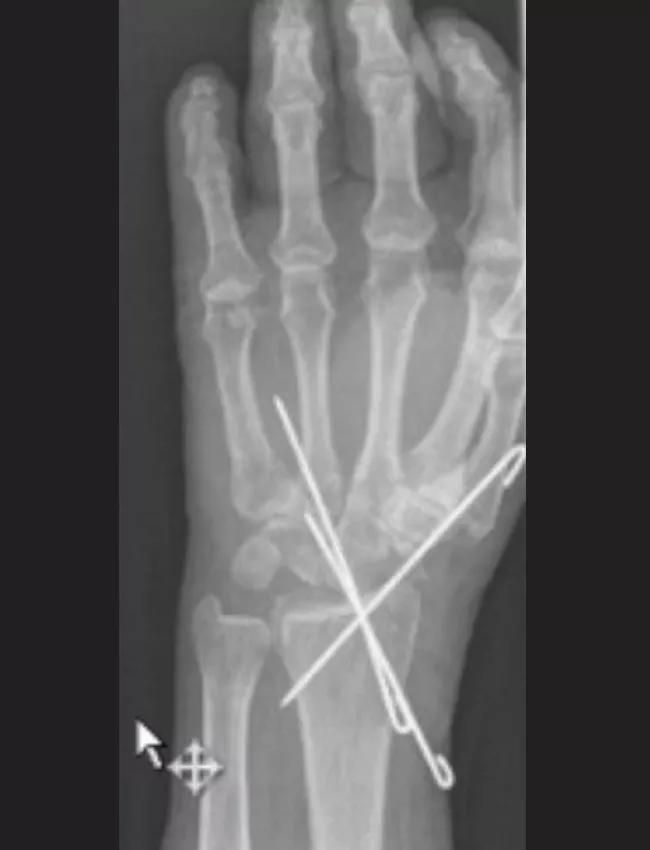
Figure 1. Proximal row carpectomy allows articulation of the healthy capitate with the lunate facet of the radius by removal of the diseased scaphoid, lunate and triquetrum.
Where there is arthritis between the radius and scaphoid, and frequently the scaphoid and trapezium, with some degree of carpal instability, the proximal carpal row (scaphoid lunate and triquetrum) are surgically removed and the healthy capitate is positioned into the lunate fossa of the radius. The wrist capsular ligaments are secured, and after healing the patient can maintain functional motion by means of articulation of the capitate head against the radius (Figure 1).
In certain cases of radioscaphoid arthritis or mid carpal arthritis, preservation of motion between the lunate and the radius can be maintained by means of removing the arthritic surfaces peripherally and centrally, yet maintaining a stable orientation of the carpus by means of fusing the lunate to the capitate (capitolunate arthrodesis) or a combination of fusion of the capitate lunate triquetrum and hamate (4-corner fusion). This allows these carpal bones to heal together in a bone block, yet allow motion between the lunate and triquetrum, and the radius and ulnar sided cartilage called the triangular fibrocartilage complex (Figure 2).
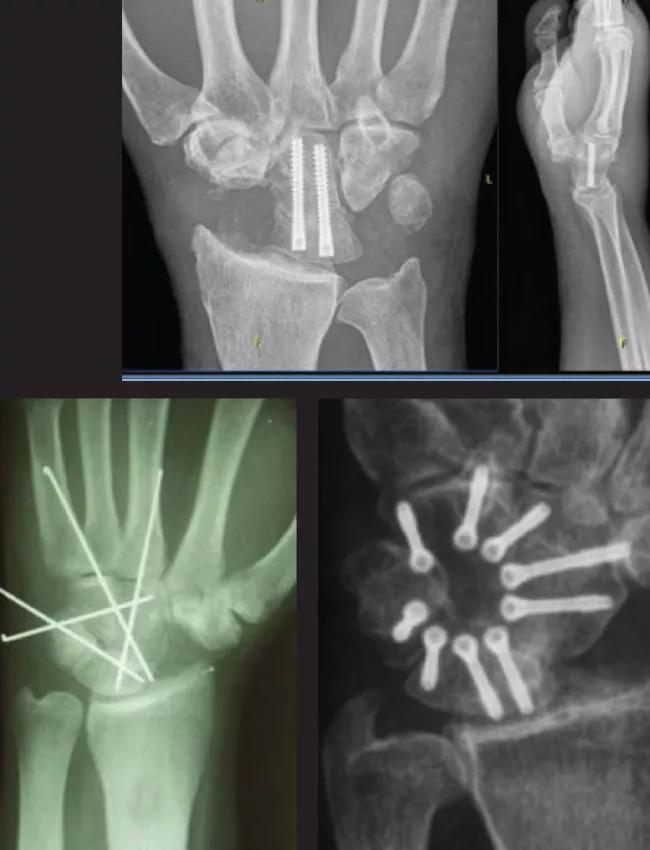
Figure 2. Intercarpal fusion allows midcarpal stabilization and healthy stable articulation of the lunate and radius. Top image shows capitolunate arthrodesis. Bottom images are views of “4-corner fusion” of the capitate, hamate, lunate and triquetrum scanned in a variety of ways. In all cases, the scaphoid has been removed for enhanced motion.
This procedure was developed at Cleveland Clinic and provides increased motion through a healthy midcarpal joint when there is radiocarpal arthritis. It involves removing the diseased scaphoid distal pole to open up motion at the midcarpal joint, and allowing the diseased and arthritic proximal one-half of the scaphoid and lunate to heal together in fusion with the radius. These techniques all utilize the principle of preserving motion through an individual’s own healthy remaining articular surfaces (Figure 3).
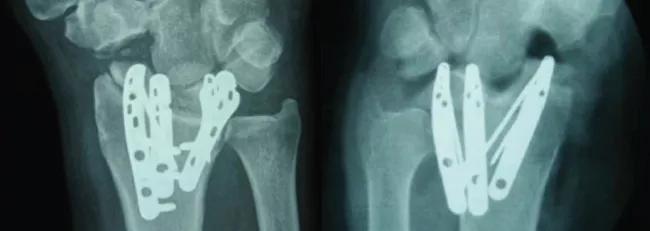
Figure 3. Scaphoid hemiresection and arthrodesis of the radiocarpal joint (the SHARC procedure) removes the distal half of the scaphoid and fuses the remaining arthritic proximal scaphoid and lunate with the radius, allowing enhanced midcarpal motion.
As has been seen in other joints, joint replacement arthroplasty can preserve mobility while reducing pain. However, it is the last resort and is used only when there are no remaining functional healthy articular surfaces. This employs replacement of the end of the radius with a new articular smooth, highly polished metal surface while the carpal bones are replaced with a highly polished synthetic surface that is anchored into the wrist remnant distally by means of a set of screws and pegs that bond to the bone (Figure 4).
Unlike total hip and knee replacements, which are performed many hundreds of thousands of times annually in the United States, there are only a few thousand such procedures performed in the wrist. Surgeons at Cleveland Clinic designed instrumentation and gained unique expertise in performing these surgeries on a regular basis.
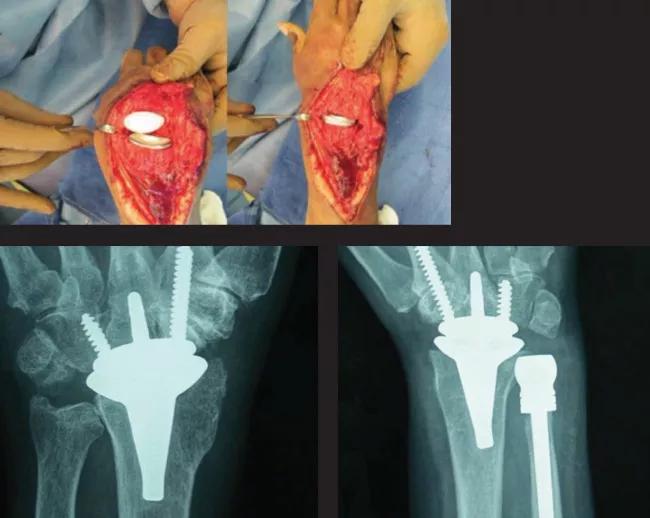
Figure 4. Total wrist replacement arthroplasty (TWA). Top – Surgical implantation. Bottom Left – X-ray of standard total wrist replacement. Bottom Right – X-rays of TWA with additional ulnar replacement arthroplasty.
The distal radioulnar joint, which allows the radius to pivot around the ulnar head in providing pronation and supination, can become stiff and painful through any of the typical mechanisms by which arthritis develops. When it occurs, pronation and supination become difficult and painful. Options for treating this problem include simple removal of the ulnar head with soft tissue reconstruction or replacement arthroplasty. Replacement arthroplasty was also pioneered at Cleveland Clinic with the development of both standard and custom implants available to replace and reconstruct this joint.
The most appropriate surgical procedure for individual patients requires careful evaluation of both the patient’s pathology and needs. When the appropriate indications are followed, the surgical expertise of Cleveland Clinic hand and upper limb surgeons can provide very successful and rewarding outcomes to decrease pain and restore functional mobility to patients with all forms of arthritis involving the multiple articulations of the wrist.
In all surgical cases, use of posterior interosseous sensory neurectomy as an analgesic adjunct, as well as use of long-acting local anesthetic (liposomal bupivacaine), may help minimize postoperative pain.
Dr. Shapiro is an orthopaedic surgeon who specializes in hand surgery. Dr. Maschke’s special interests are hand, wrist, elbow and peripheral nerve surgeries. Dr. Evans is Director of the Upper Extremity Center and specializes in shoulder, elbow and hand surgery. Dr. Seitz is Executive Director of Cleveland Orthopaedic and Spine Hospital at Lutheran Hospital and his specialty interests include management of problems of the entire upper extremity, including the shoulder, elbow, wrist and hand.
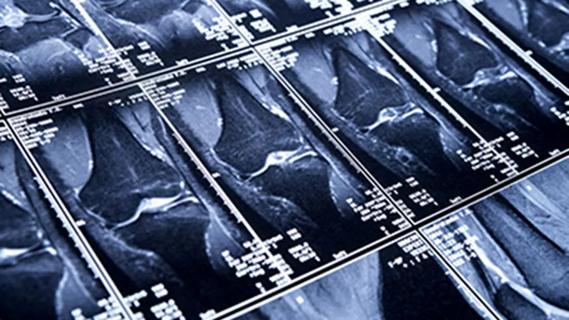
Center will coordinate, interpret and archive imaging data for all multicenter trials conducted by the foundation’s Osteoarthritis Clinical Trial Network
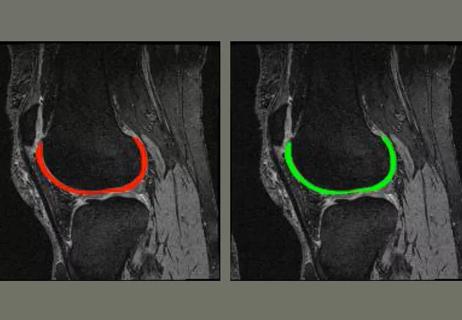
Leading-edge technology will improve diagnosis and prognosis
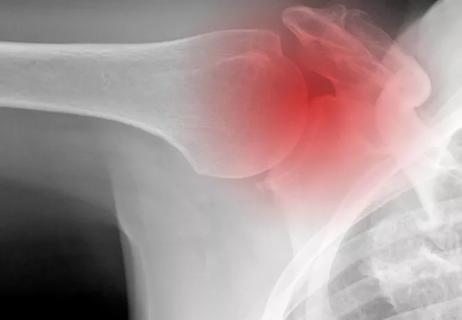
What we typically see in these atypical cases

Current definitions insufficient for interpreting clinical outcomes
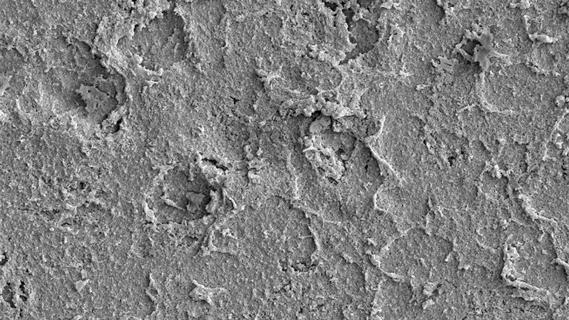
Researchers hope it may one day help patients avoid explantation surgery

Rest is often not the best care for gamers’ overuse injuries

Biologic approaches, growing implants and more
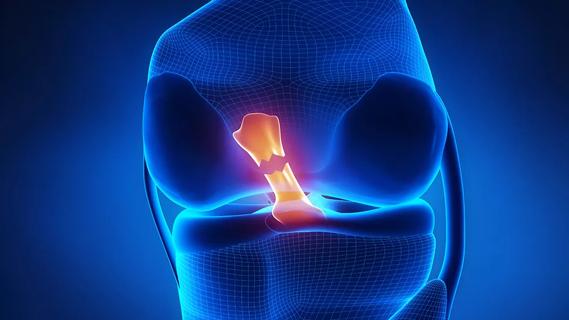
Study reports zero infections in nearly 300 patients